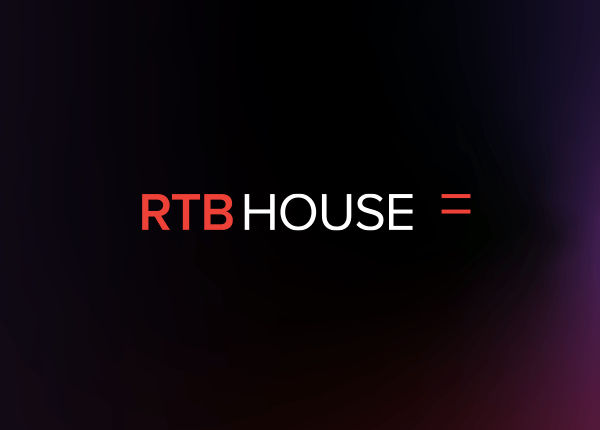Last Updated on: 24th May 2024, 10:03 pm
Targeted ads have not had an easy time in the last few years. Even though the vast majority are commercial, there was a wake-up call from the 2016 UK Brexit vote and then the Cambridge Analytica scandal in 2018. It became clear that targeted political ads could create bubbles and echo chambers that are open to the charge of creating division and driving disinformation. But the main objection from the consumer was of privacy invasion and, at the very least, ‘creepiness.’
Although we know that our data gets collected to support targeted advertising online, targeted ads have earned an unpleasant reputation, seeming to ‘know’ us and trespass on our space in a way a billboard, for example, does not. But, like it or not, in a cookieless world, targeting is here to stay in some form or another. The challenge is to make it work, so it serves its target rather than exploits it. The question, of course, is how?
RTB House turned to Catalina Balan, Digital, Data & Technology Director at Publicis Groupe,to share where the industry is going with targeted ads and how the technology to make them more useful is changing.
Key insights in this article:
- The bad reputation of targeted ads is a reality. But scandals get forgotten, and no advertiser wants to come across as ‘creepy’.
- Demographic advertising can’t work effectively alone in the digital space but has a place as a layer in blended strategies
- AI and NLP-type solutions will solve contextual advertising’s relevance problems, and it promises to lead
- ID-based targeting is vulnerable to cookieless but will remain in various forms.
- Cohort approaches like Topics may only be suitable for big players like Google
- The future’s exciting: watch out for the Metaverse!
Some clichés are worth repeating because they are so true. Those who wring their hands at the phasing out of 3rd-party cookies should remember the old days when ad execs complained, “Half my advertising spend is wasted; the trouble is, I don’t know which half.” The once-clever solution of demographic targeting now looks almost quaint when used entirely alone in a digital context.
Balan points to an internet meme showing how clumsy demographic targeting can be. It compares Prince Charles with Ozzy Osbourne. Both men are, in demographic terms at least, strikingly similar. They are male, British, born in 1948, live in a castle, have been married twice, and are wealthy and famous. But clearly, that gets you only so far.
The post-cookie world is pushing advertisers to be more creative in how they approach targeting. Fortunately, technology is enabling a form of targeting that does not carry the sense of an invasion of privacy. But the question is which kind of targeting is best, and how is it best used?
Everyone’s Favorite: Contextual Advertising
Contextual targeting is ad placement done smartly. Rather than relying on broad demographics, contextual ad campaigns show users content similar to what’s on the page they are currently browsing. But traditionally, it has had drawbacks, as Balan points out:
“The disadvantage of contextual targeting is that not all audiences will find ads relevant. So, not everyone reading about investing will be interested in investing in products. Or someone reading about the environmental impact of diesel cars is not necessarily going to be interested in buying one.”
But the technology in contextual targeting is fast becoming more granular and subtle, with some companies now claiming to offer algorithms that can discern sentiment of content, both positive and negative. Natural language processing (NLP) can detect inflection and context, ensuring content reaches quality users. So far, so good. Contextual targeting assisted by self-learning algorithms could be the best bet of all the strategies in the targeting toolbox. But there’s a catch.
As ads become more ‘relevant’, they run the risk of seeming to be intrusive, even in an era without 3rd-party cookies. And this brings us to the significant problem for targeted advertising: trust. What has led to this bad reputation, and what can be done about it?
“I believe that people have become more aware of ads “following” them around, and that’s where targeting got its bad reputation. Some algorithms have become a lot better at predicting customer needs. Those two factors, along with GDPR (or cookie consent) and things like the Cambridge Analytica scandal, have made consumers more aware and sensitive to being targeted.” says Balan.
From an agency point of view, the strategy for reassuring clients anxious about targeting is to talk about perception. In a sense, all advertising is targeted.
“In a digital world, even if we might not know who the person is on a site, we can at least understand the context or environment they are in. That shows potential interest in a subject, which is a form of targeting. Furthermore, the sites that require a login will always have richer data on the individuals browsing, hence another form of targeting.” says Balan
ID-based Solutions: Still Around and Set to Stay
In addition to contextual targeting, there is a range of competing and cooperating solutions on offer to the industry that still relies on the individual identity of the consumer, and these look set to stay. For example, customer Data Platforms (CDP) extract personally identifiable information from different marketing sources and create a unified database. In Balan’s view, contextual targeting and cohort add to the mix with no right or wrong individual solution.
“Phasing cookies out will pose a challenge for some ID-based solutions and potentially cohorts,” she says. “But for now, ID-based will stay relevant for walled gardens with a significant amount of users willing to share their data and contextual will become more relevant in programmatic.”
ID-based and the Loss of Cookies
But although ID-based targeting will be heavily impacted by the loss of cookies (as some brands stay away from sharing CRM data or personal identifiable information (PII) in general with advertisers), they won’t disappear completely.
“I am not sure what the future holds, but I am sure that some walled gardens will keep relying on their ID-based targeting. However, the smaller publishers are already changing their approach or finding ways to enrich or replace data gaps.”
And then there are the issue of cohorts which are still something of an unknown quantity – it remains to be seen if Google’s big gamble in this innovation will work:
“I think because they’ve changed it quite a few times, it’s still confusing. Google is a huge powerhouse and a huge walled garden with access to many data points. It will be very interesting to watch. But they have to operate Topics based on GDPR. What they’re doing is they’re trying to keep it within the Chrome ecosystem. So they’re trying to understand your interests based on what you read or research online.
“And in that sense, Google is taking a contextual approach. However, I don’t think they’re going to disregard demographics completely from that, and some sort of layer of understanding of your demographic information will also be added on top of the contextual.”
In the end, the place for contextual targeting will very much depend on the kind of consumer and the kind of internet use they’re engaged in. How you browse, where you browse and what you do when you get there will drive the kind of targeting that works best.
“Channels, such as social, search and programmatic have different targeting capabilities. In social, ID-based is very much present, because you have to be logged in to consume and share content, and all your preferences are stored under a unique ID. Outside social, Amazon and Google use similar solutions due to their extensive usage, and you have to be logged in to use their services. In programmatic, that unique ID becomes harder to follow around because sites don’t generally require logins and cookies are less reliable, so contextual or cohort-based targeting is more suitable there.” says Balan.
Measuring Effectiveness
Measuring effectiveness remains an enormous challenge across all targeting methods. “The challenges we face as an industry are around measurement solutions, in particular multi-touch attribution,” says Balan. “I don’t think this is the right way to do it, but I don’t foresee last-click measurement being impacted. Bottom line, as long as you use the same measuring method across all your channels or campaigns, the results won’t be impacted.”
In conclusion, the future is as uncertain as ever, but the trend suggests that ID-based advertising will not wholly disappear even in the cookieless era. At the same time, contextual targeting’s historical problems of relevance will fade thanks to AI and NLP-type solutions. Balan is excited about the creative possibilities that cookieless is set to generate.
“Other than contextual and cohort-based ideas, it will be great to see what other solutions will fill in the gap created by the disappearance of cookies. The biggest challenge, in my opinion, is advertising having to adapt to stay relevant and cut through the noise, without infringing on one’s data,” she says.
And if the Metaverse gets traction and enters the mainstream? The challenges for all targeting technologies take on a whole new dimension.
But that, as they say, is another story altogether.




